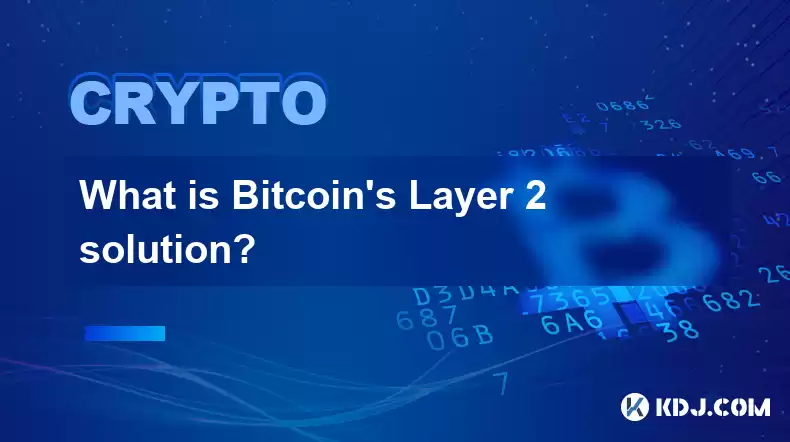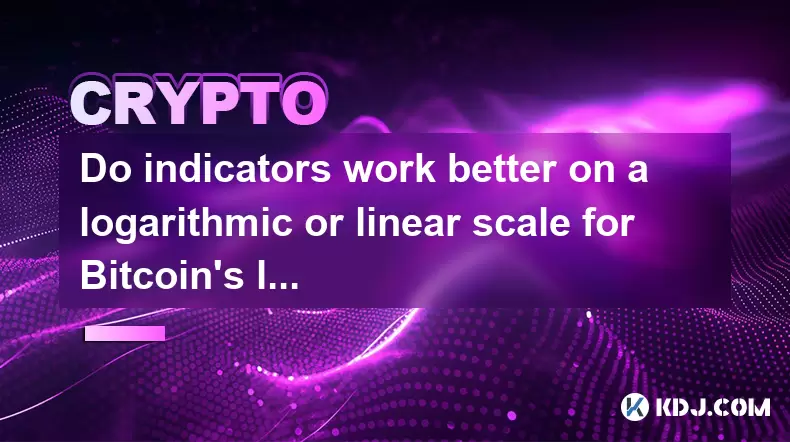-
 Bitcoin
Bitcoin $118400
0.47% -
 Ethereum
Ethereum $3836
2.20% -
 XRP
XRP $3.157
2.98% -
 Tether USDt
Tether USDt $0.9999
-0.03% -
 BNB
BNB $801.5
1.31% -
 Solana
Solana $180.9
2.07% -
 USDC
USDC $0.9999
-0.02% -
 Dogecoin
Dogecoin $0.2225
2.50% -
 TRON
TRON $0.3285
-1.02% -
 Cardano
Cardano $0.7789
2.60% -
 Hyperliquid
Hyperliquid $43.60
2.39% -
 Sui
Sui $3.892
4.41% -
 Stellar
Stellar $0.4229
3.34% -
 Chainlink
Chainlink $18.01
3.98% -
 Hedera
Hedera $0.2745
6.77% -
 Bitcoin Cash
Bitcoin Cash $582.3
3.38% -
 Avalanche
Avalanche $23.77
1.04% -
 Ethena USDe
Ethena USDe $1.001
0.01% -
 Toncoin
Toncoin $3.493
3.59% -
 Litecoin
Litecoin $110.0
2.48% -
 UNUS SED LEO
UNUS SED LEO $8.936
-0.37% -
 Shiba Inu
Shiba Inu $0.00001304
2.49% -
 Uniswap
Uniswap $9.999
1.09% -
 Polkadot
Polkadot $3.897
3.26% -
 Monero
Monero $308.6
-0.83% -
 Dai
Dai $0.9999
-0.01% -
 Bitget Token
Bitget Token $4.504
-0.04% -
 Pepe
Pepe $0.00001154
2.95% -
 Cronos
Cronos $0.1471
3.06% -
 Ethena
Ethena $0.6691
19.53%
What is Bitcoin's Layer 2 solution?
Bitcoin's Layer 2 solutions, like the Lightning Network and Liquid Network, enhance scalability and speed without modifying the core protocol, offering faster transactions but with varying trade-offs in security, privacy, and complexity.
Mar 04, 2025 at 03:31 pm

Key Points:
- Bitcoin's Layer 2 solutions aim to improve scalability and transaction speed without altering the core Bitcoin protocol.
- Several Layer 2 solutions exist, each with its own strengths and weaknesses. These include the Lightning Network, Liquid Network, and sidechains.
- Understanding the differences between these solutions is crucial for choosing the best option for specific needs.
- Each Layer 2 solution involves trade-offs regarding security, privacy, and complexity.
What is Bitcoin's Layer 2 solution?
Bitcoin, while revolutionary, faces limitations in transaction speed and scalability due to its base layer (Layer 1) design. Layer 2 solutions address these limitations by building secondary networks on top of the main Bitcoin blockchain. This allows for faster and cheaper transactions without compromising the security of the underlying blockchain. Think of it like adding express lanes to a highway – the highway itself (Layer 1) remains unchanged, but the express lanes (Layer 2) offer a quicker route.
The Lightning Network:
The Lightning Network is arguably the most popular Layer 2 solution for Bitcoin. It operates as a network of micropayment channels, allowing users to transact off-chain. This means transactions aren't directly broadcast to the Bitcoin blockchain, resulting in significantly faster and cheaper transactions. Funds are locked in a smart contract on the main chain, ensuring security. However, setting up a channel requires a small amount of Bitcoin locked up.
- How it works: Users open a payment channel, exchanging funds. Transactions within the channel are only recorded on the blockchain when the channel is closed.
- Advantages: Fast transactions, low fees, improved scalability.
- Disadvantages: Requires technical knowledge to set up, funds are locked until the channel is closed.
The Liquid Network:
Liquid is a sidechain built specifically for Bitcoin. It offers faster and more private transactions compared to the main Bitcoin blockchain. It's a federated sidechain, meaning it's secured by a network of trusted nodes. This means it sacrifices some degree of decentralization for increased speed and privacy. Assets can be easily transferred between Liquid and the main Bitcoin blockchain.
- How it works: Users transfer Bitcoin to the Liquid sidechain and transact there. Transactions are then confirmed on the main chain.
- Advantages: Faster transactions, improved privacy, easy transfer to/from Bitcoin main chain.
- Disadvantages: Less decentralized than the main Bitcoin blockchain, requires trust in the federation of nodes.
Sidechains in General:
Sidechains, including Liquid, are separate blockchains that are pegged to the Bitcoin blockchain. This means that Bitcoin can be transferred to and from the sidechain, maintaining a connection with the main chain's security. Different sidechains offer varying features, such as enhanced privacy or the ability to issue tokens. However, the security and functionality of a sidechain are largely dependent on its design and implementation.
- How it works: Bitcoin is locked on the main chain, creating a corresponding token on the sidechain. Transactions occur on the sidechain, and the Bitcoin can be returned to the main chain.
- Advantages: Enhanced functionality, potentially improved privacy and scalability.
- Disadvantages: Security depends on the sidechain's design and implementation, complexity can vary greatly.
Other Layer 2 Solutions:
While the Lightning Network and sidechains dominate the conversation, other Layer 2 scaling solutions are emerging. These often involve techniques like state channels and rollups, aiming to further enhance Bitcoin's scalability and efficiency. These solutions are still under development or have limited adoption compared to the more established options. Their complexity makes them less user-friendly for the average Bitcoin user.
- State Channels: Similar to the Lightning Network, but potentially with more complex functionalities.
- Rollups: Batch transactions off-chain and submit only a summarized version to the main chain.
Security Considerations:
The security of Layer 2 solutions is a critical aspect to consider. While they build upon the security of the Bitcoin blockchain, they also introduce their own vulnerabilities. The Lightning Network's security relies on the smart contracts securing the channels, while sidechains' security depends on the consensus mechanism used on the sidechain itself. Thorough research and understanding of the specific solution are essential before using it.
Privacy Implications:
Depending on the Layer 2 solution, privacy can be either enhanced or compromised. The Lightning Network, while offering faster transactions, doesn't necessarily enhance privacy. Some sidechains, however, are designed with privacy features in mind, offering increased anonymity compared to on-chain transactions.
Frequently Asked Questions:
Q: Are Layer 2 solutions secure? A: The security of Layer 2 solutions varies depending on the specific implementation. Generally, they inherit some security from the underlying Bitcoin blockchain but introduce their own potential vulnerabilities.
Q: Are Layer 2 solutions complicated to use? A: The complexity varies widely. The Lightning Network, while powerful, can be technically challenging for beginners. Other solutions might offer simpler user interfaces.
Q: Which Layer 2 solution is best? A: The "best" Layer 2 solution depends on your priorities. If speed and low fees are paramount, the Lightning Network is a strong contender. If privacy is a major concern, a privacy-focused sidechain might be more suitable.
Q: Do Layer 2 solutions affect Bitcoin's decentralization? A: Some Layer 2 solutions, like federated sidechains, might compromise decentralization to some extent. Others, like the Lightning Network, aim to maintain Bitcoin's decentralized nature.
Disclaimer:info@kdj.com
The information provided is not trading advice. kdj.com does not assume any responsibility for any investments made based on the information provided in this article. Cryptocurrencies are highly volatile and it is highly recommended that you invest with caution after thorough research!
If you believe that the content used on this website infringes your copyright, please contact us immediately (info@kdj.com) and we will delete it promptly.
- Ozak AI: Can This Underdog Crypto Achieve a Bull Run to $1?
- 2025-07-31 22:30:12
- Coinbase Breach: Navigating Insider Risk and Bolstering Security
- 2025-07-31 23:11:55
- Bitcoin Rebounds, WeWake Presale Gains Traction: What's the Buzz?
- 2025-07-31 22:30:12
- Bitcoin, Altcoins, and Volume Watchlists: Decoding the Crypto Landscape
- 2025-07-31 23:11:55
- Tron, Fartcoin, and BlockchainFX: What's Trending (and What's Not) in the Crypto World
- 2025-07-31 21:32:19
- Bitcoin, Corporate Investments, and Sustainability: A New Era or Fleeting Fad?
- 2025-07-31 20:50:14
Related knowledge

What is the significance of the 21-week EMA in a Bitcoin bull market?
Jul 10,2025 at 06:56pm
Understanding the 21-Week EMA in Cryptocurrency AnalysisThe 21-week Exponential Moving Average (EMA) is a technical indicator widely used by traders a...

How to identify a volatility contraction pattern on Bitcoin using indicators?
Jul 07,2025 at 07:28am
What is a Volatility Contraction Pattern in Bitcoin Trading?A volatility contraction pattern refers to a phase where the price movement of an asset, s...

Do indicators work better on a logarithmic or linear scale for Bitcoin's long-term chart?
Jul 08,2025 at 01:42pm
Understanding Chart Scales in Cryptocurrency TradingIn cryptocurrency trading, particularly for analyzing Bitcoin's long-term trends, chart scales pla...

What is the Woodies CCI indicator and can it be used for Bitcoin?
Jul 04,2025 at 05:14pm
Understanding the Woodies CCI IndicatorThe Woodies CCI indicator is a variation of the traditional Commodity Channel Index (CCI), which was originally...

How to use indicators to trade the opening range breakout for Bitcoin CME futures?
Jul 05,2025 at 07:35pm
What Is the Opening Range Breakout Strategy?The opening range breakout (ORB) strategy is a popular trading technique used in both traditional markets ...

How to use the Relative Vigor Index (RVI) for Bitcoin trading?
Jul 07,2025 at 02:00pm
Understanding the Relative Vigor Index (RVI)The Relative Vigor Index (RVI) is a technical analysis tool used to assess the strength of price movements...

What is the significance of the 21-week EMA in a Bitcoin bull market?
Jul 10,2025 at 06:56pm
Understanding the 21-Week EMA in Cryptocurrency AnalysisThe 21-week Exponential Moving Average (EMA) is a technical indicator widely used by traders a...

How to identify a volatility contraction pattern on Bitcoin using indicators?
Jul 07,2025 at 07:28am
What is a Volatility Contraction Pattern in Bitcoin Trading?A volatility contraction pattern refers to a phase where the price movement of an asset, s...

Do indicators work better on a logarithmic or linear scale for Bitcoin's long-term chart?
Jul 08,2025 at 01:42pm
Understanding Chart Scales in Cryptocurrency TradingIn cryptocurrency trading, particularly for analyzing Bitcoin's long-term trends, chart scales pla...

What is the Woodies CCI indicator and can it be used for Bitcoin?
Jul 04,2025 at 05:14pm
Understanding the Woodies CCI IndicatorThe Woodies CCI indicator is a variation of the traditional Commodity Channel Index (CCI), which was originally...

How to use indicators to trade the opening range breakout for Bitcoin CME futures?
Jul 05,2025 at 07:35pm
What Is the Opening Range Breakout Strategy?The opening range breakout (ORB) strategy is a popular trading technique used in both traditional markets ...

How to use the Relative Vigor Index (RVI) for Bitcoin trading?
Jul 07,2025 at 02:00pm
Understanding the Relative Vigor Index (RVI)The Relative Vigor Index (RVI) is a technical analysis tool used to assess the strength of price movements...
See all articles

























































































